Fauna
People tried repeatedly to restore the species composition of the fauna, or even to add more to it. Common deer, bison, beaver, and fallow deer (the latter were exterminated during the First World War) were successfully acclimatized or re-acclimatized. Experiments on the acclimatization of the reindeer, bighorn sheep and the re-acclimatization of the bear were unsuccessful. Polish primitive horse can only be seen currently in the national park’s excursion enclosures, among which ancestors was wild tarpan, disappeared from the face of the earth. In its veins flows the blood of a domestic horse as well. At the same time, some species found an ecological niche in Pushcha, migrating from other places. These are the raccoon dog, muskrat, American mink.
Mammals. The mammals of Belovezhskaya Pushcha are currently represented with 59 species, which is 85% of the fauna of Belarus. The most interesting among them is the zubr, included into the International Red Book. This is the largest in Europe and one of the most ancient animals of our planet, which belongs to the family of bison. Thoroughbred bison are currently represented with two subspecies - Belovezhsky and Belovezhsky-Caucasian. Earlier (in the period from 1946 to 1968), the Belorussian part of Belovezhskaya Pushcha contained both subspecies.
Then animals with an admixture of Caucasian blood were taken out, and now only Belovezhsky or European bison inhabit here. The body length of males varies between 255 to 305 cm, height in the pectoral region - 170-195 cm. Females are somewhat smaller. The weight of adult males is 600-850 kg (sometimes it can reach 1 ton), females - 400-600 kg. Sexual dimorphism stands out well in adults. Males have an easy-to-see hump due to the longer length of the spinous processes in the pectoral region, and the head is crowned with a pair of well-developed and slightly curved black sickle-shaped horns. They are thicker, more massive and wider, but less curved than females’ ones. The mane, hanging from the bottom of the neck gives the bison the appearance of a primitive beast. The body color is dominated by brownish-brown tones. The bison reach their full physical development at the age of 7-8 years, and live about 25 years.

Pressured by man, the bison almost disappeared from the face of the earth. The forests of Belovezhskaya Pushcha were the last habitat of these animals. They were under special protection here. The greatest number of bison in Pushcha was recorded in 1857 (1898 animals). However, the unreasonable breeding of other ungulates (common, fallow and roe deer, wild boar), grazing of a large number of cattle, which is a food rival of the bison, as well as poaching during the First World War, led to a catastrophic decline in their livestock. In 1919, the last living in the nature female bison was killed. Only 52 bison have survived in zoos and zoological gardens in Western Europe, most of which were once taken from Belovezhskaya Pushcha. Therefore, it was decided to begin the restoration of the forest giants in the forest. The first 5 bison bought in Poland were delivered in the Belorussian part of Pushcha in 1946. In 1953, the bison were released, their free breeding and returning to their former habitats began in Belovezhskaya Pushcha.
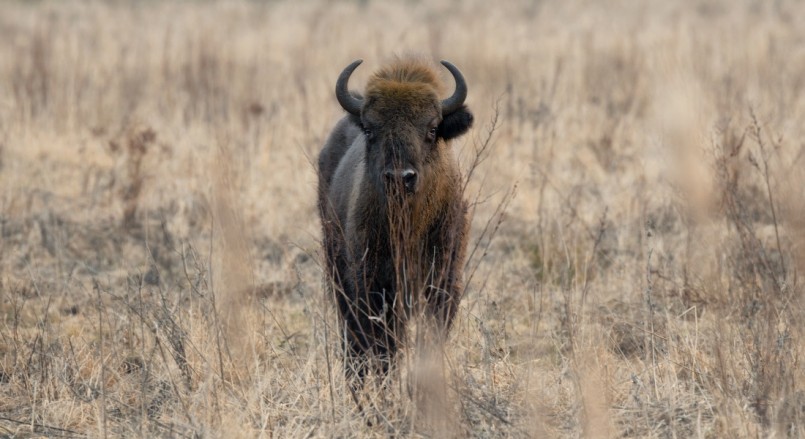
Over the years, the number of bison has increased and exceeded the optimal number (250 cattle heads) recommended for keeping in this area. Therefore, the regulation of their livestock and resettlement in other republic regions began in subsequent years.
In winter the bison concentrate near the feeding areas, where they get hay and succulent food. Females with young animals and a small number of adult males form large herds or congeries during this period.
Sexually mature males are usually kept separately beyond the breeding period, in groups of 3-5 (sometimes up to one and a half dozen) individual animals. They can be often found on the forest outskirts or outside of it. Bison-singletons are detected as well - old bulls, following a solitary way of life.
In the summer-autumn season there is a constant movement of animals through the national park territory. At this time, mixed groups of females, youngsters and beeflings predominate, numbering from 15 to 20 (sometimes up to 80 or more) individual animals. They are mutable and are formed from animals not bound by kinship. The leader of such a herd is a strong and experienced female bison, which the whole herd obeys to.
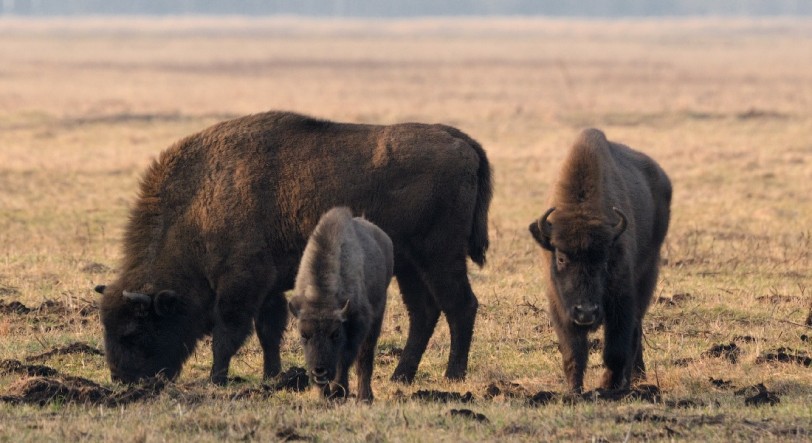
The mating bison period is called "yar" and falls on August-October. At this time, males roam in search of females and are almost always present in their herds. Sometimes struggles occur between them for females. After mating, they return to their former habitats.
Female bison pregnancy lasts 264 days in average. Usually once in 2-3 years a female brings one calf, which can feed with the mother's milk up to two years. The main period of calving is in May-July. The born calf is fiercely defended by its mother during the first days and is led into a herd only two-three weeks after the calf gets stronger.
Feeding bison can be most often found in oak and hornbeam forests, pine and spruce forests, mixed young forests, forest glades, meadows and fields. Their ration includes about 330 plant species.
According to the 2006 census, there were 3155 bison in 32 countries of the world. At the same time, 1955 animals lived in the wild, and in enclosures and zoos condition - 1200. Belarus is the second largest in the world in the number of bison (after Poland) - about 600 animals. Their livestock was almost 350 individual animals in the Belorussian part of Belovezhskaya Pushcha alone in 2008.
In addition to the bison, the roe deer, fallow deer, elk and wild boar breed in Pushcha of the ungulates.
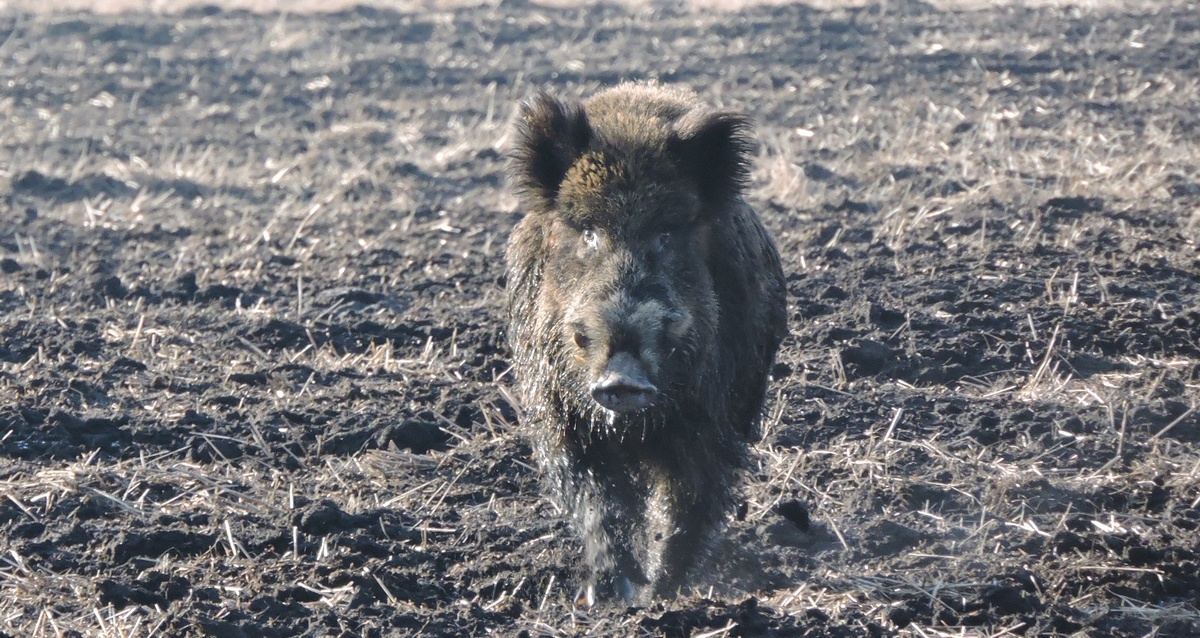
The most numerous of them are common deer and wild boar, which number can reach more than 1500 individual animals in occasional years.

The livestock of European fallow deer (wild goat) incur considerable fluctuations and depend on winter condition and the presence of its enemies - wolf and lynx.

In recent years, the total count of fallow deer in Pushcha is about 300 individuals.

The smallest species in number among the ungulates is the moose. Only about 80 of them live in Belovezhskaya Pushcha. The main reasons for the low number of moose are the mismatch of habitat conditions and food competition of the deer.
Predatory mammals are represented with 12 species. The largest of them are the wolf, lynx, fox, raccoon dog, badger and otter. From small predators there are the stone and pine marten, American mink, hawk, ermine, weasel.
The fauna of insectivorous mammals includes 7 species. The common hedgehog, mole, common and pygmy shrew, water shrew. More rarely you can find the Laxmann’s and Mediterranean shrew. Water shrew (its weight is about 3 g) is the smallest mammal in the world.
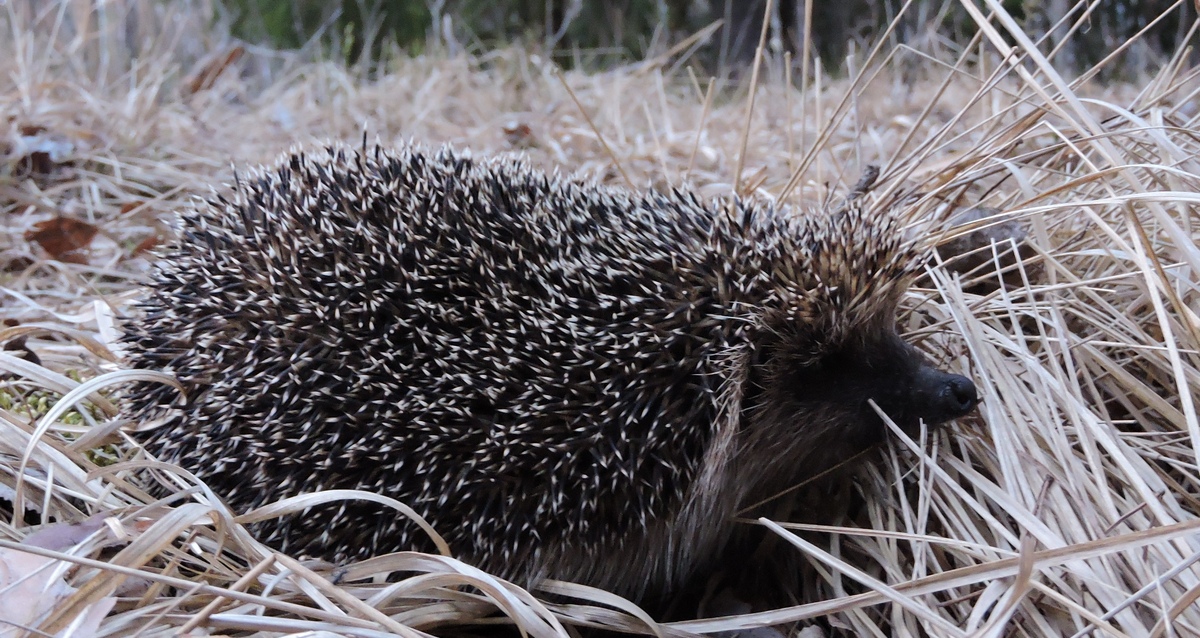
There are 20 species in Pushcha which are part of the rodents order. Such rare species as the birch mouse, harvest mouse, dormouse (hazel and garden), hamster, voles (pine, root and field) among them.
The brown hare is quite common in Belovezhskaya Pushcha, while the alpine hare appears only in the north of the forest massif once in a rare while.
5 species of bats the 13 living in Pushcha are listed in the Republican Red Book. These are the lesser noctule, barbastelle, northern bat, Brand and Natterer’s bats. For the latter species, Pushcha is the only place in our republic.
Ornithofauna. The ornithofauna of Belovezhskaya Pushcha is exceptionally rich and diverse. More than 250 species of birds out of 310 detected in the whole territory of Belarus inhabit here. This is more than in any other national park of our country or in Poland. 186 species nest there.

Thanks to well-preserved biotopes, 64 kinds of birds listed in the last edition of the Red Book of the Republic of Belarus can be found in Pushcha.
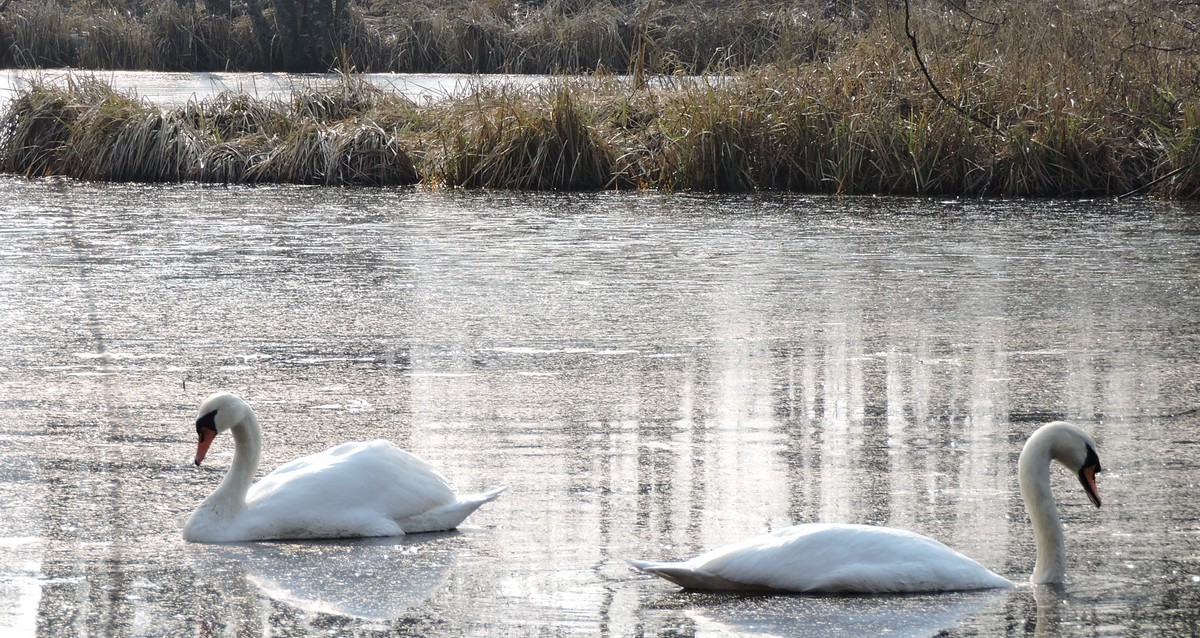
It is home to the great gray owl and the boreal owl, the black stork and the bittern. So it is no coincidence that Belovezhskaya Pushcha and the "Dikoye" swamp (which is inhabited by a very rare species - the aquatic warbler) are the key ornithological territories of international importance.

Out of 28 species of dilurnal birds of prey, detected in the past 100 years in the territory of present-day Belarus, 25 species have been listed in Belovezhskaya Pushcha. The largest feathered predator is the white-tailed eagle, which chose Pushcha bodies of water. It is listed in the International and National Red Books.
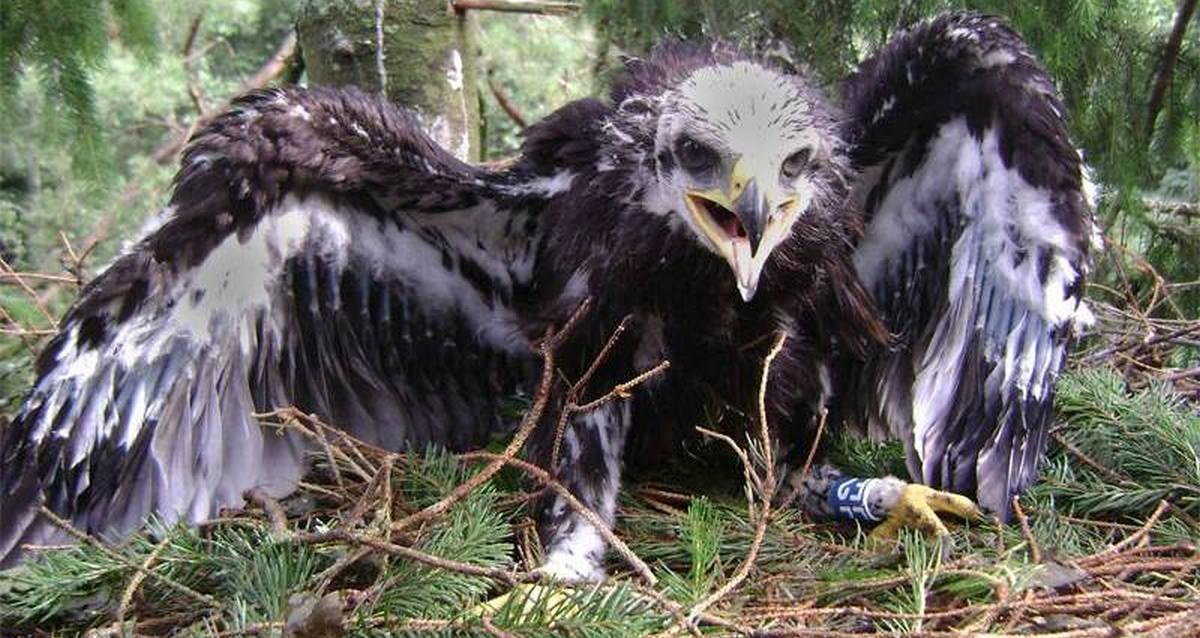
Its small number is not so much due to poaching and the nests destruction, as to forests reduction in floodplains of large rivers and lakes, the impoverishment of fish resources, disturbance in nesting time, as well as the excessive use of pesticides in agriculture, which end consumer became many fish-eating birds.
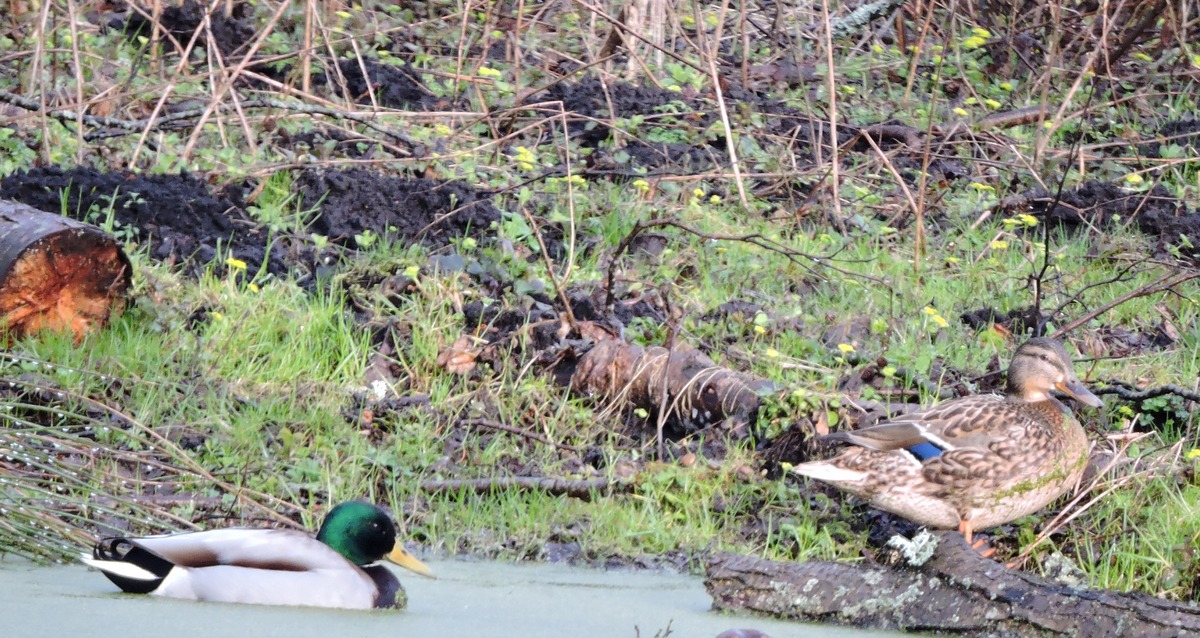
Of the endangered birds of Europe, the greater spotted eagle breed in the forest (7 pairs) as well, which number in whole is about two hundred pairs in Belarus. Even mixed pairs of large and lesser spotted eagles are detected in the national park.
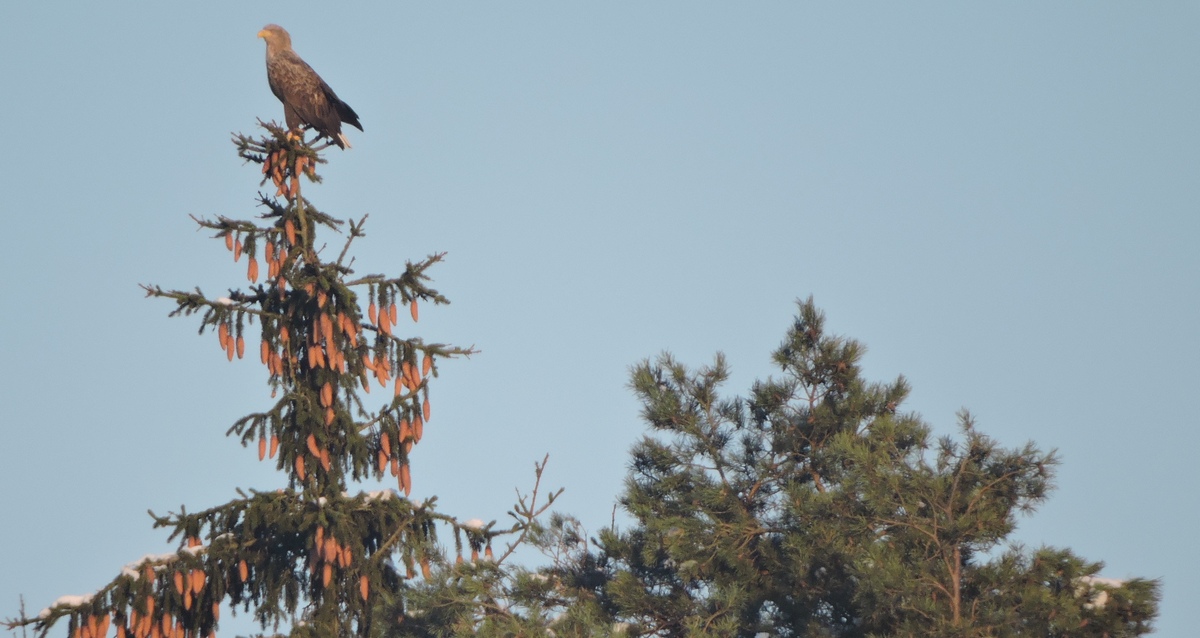
Night predators - owls, are represented with 11 species, most of which are listed in the Red Book.
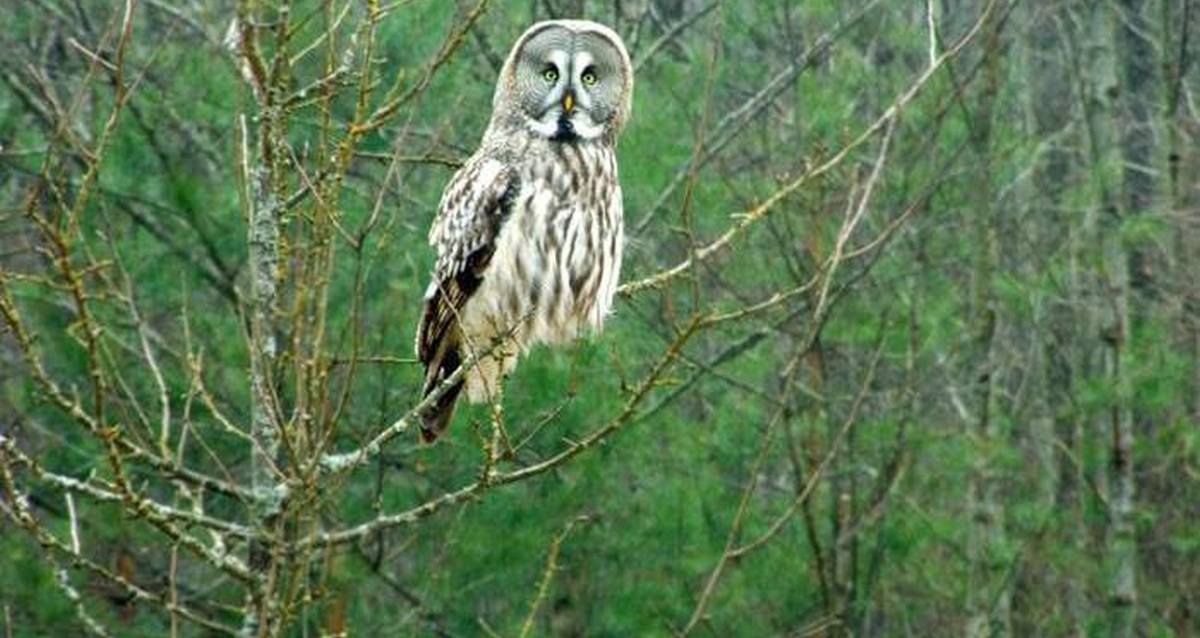
The largest owl is the eagle-owl, the weight of adult birds varies between two to three kilograms, and the smallest is the pygmy owl, weighing only 60-80 g.
Belovezhskaya Pushcha is, perhaps, the only place where all 10 species of nesting woodpeckers are detected, which can be found in Europe. Here you can meet a typical inhabitant of European deciduous forests - the middle spotted woodpecker and the representative of the northern taiga coniferous forests - the three-toed woodpecker, the dense woodland dweller – the white-backed woodpecker, and the exceptionally synanthropic species - the Syrian woodpecker, the smallest woodpecker in Europe – the wryneck and the largest one – the black woodpecker, the most secretive – gray-headed and very "sociable" – the great spotted one.
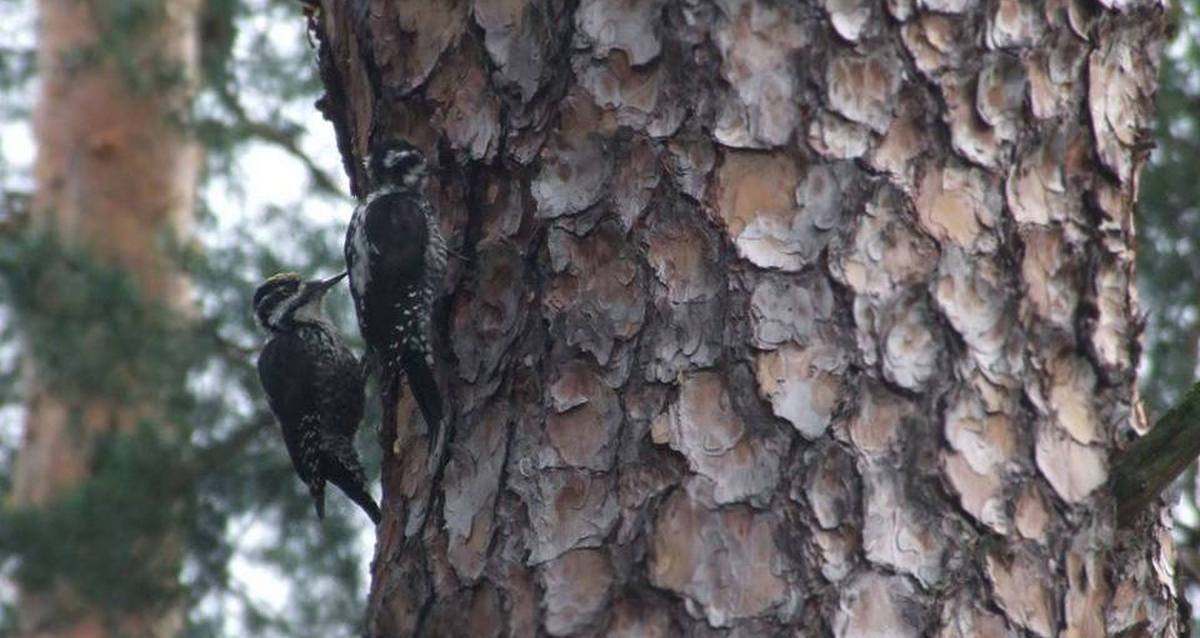
Birds are amazing creatures of nature. You can talk about them for a long time. But the best way of knowing is to study them in nature.
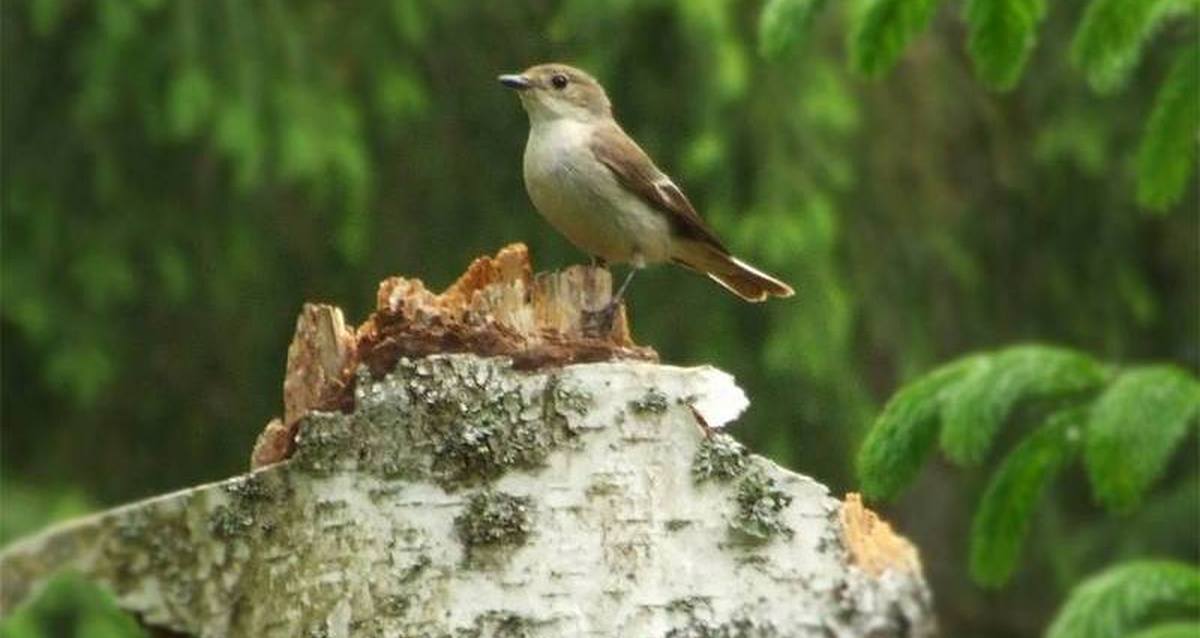
Reptiles. All 7 species of reptiles of Belarus are noticed in Belovezhskaya Pushcha. The most common snake is the grass-snake, which live in the national park almost everywhere, and appear most often in wet places. More rarely you can see the adder and smooth snake.
The most typical of the lizards is the sand lizard. Usually it can be seen on clearings among light pine forests. A somewhat smaller lizard, the viviparous, inhabits the swampy pine forests, the banks of rivers and lakes. The slowworm differs from other lizards in the absence of limbs and can be found throughout the forest. The pond turtle, like the smooth snake, is listed in the Red Book of Belarus.
Amphibians. There are 11 species of amphibians in Belovezhskaya Pushcha. These are are common and northern crested newts, the fire-bellied toad, spade-footed toad, tree frog, three species of frogs and three species of toads. European brown and moor frogs are common in damp forest habitats, and the pool frog is in ponds with slack water. The common toad, which prefers wet forests appear more often among toads. Green and natterjack toads are more rare (the latter is listed in the Republican Red Book). The tree frog is quite an ordinary species, which can climb trees and shrubs thanks to sucker cups on the fingers. Most often it can be found in broad-leaved forests and in moist and shrub meadows.
Ichthyofauna. The ichthyofauna of Belovezhskaya Pushcha is represented with 27 species of fish and brook lamprey. The common roach, perch, ruffe, pike, gudgeon, tench, crucian and Prussian carps. Rare representatives – the eel and sheat-fish, detected by single encounters. One kind – the common barbel or marena, is listed in the Republican Red Book. The main abundance of fish is concentrated in the catch basins of the Lesnaya and Narew rivers and the artificial reservoirs of Lyadskoye and Khmelevskoye.
Insects. About 70% of all living beings that inhabit our planet are insects. Already more than a million of their species have been discovered and described, but scientists annually find hundreds and thousands of new ones. About 10,000 insect species are known In Belovezhskaya Pushcha, despite the fact that this class has not been sufficiently studied yet.

The most rich in species are the group of beetles, Hymenoptera, flies, Lepidoptera and Hemiptera, which account for more than 95% of the species diversity of the national park insects.
Among almost 3,000 species of beetles the most numerous are the ground beetle, rove beetle, weevil, leaf beetle, longhorn beetle and scarab beetle. The largest ground beetle is the Carabus, 6 species of which are listed in the Red Book. The rarest species of them is the Carabus nitens, and the Carabus intricatus is one of the most beautiful.
Many species of invertebrates live in soil, forest litter, rotten wood and under tree barks. A feature of the beetles fauna of Belovezhskaya Pushcha is the presence of a large number of species which live in dead wood at various stages of decomposition. They are extremely rare in other forests, as sanitary felling and dry-wood removal are conducted there. One of these species, is a rather large and spectacular hermit beetle, which larvae feed on half-decayed wood of deciduous trees. Adult beetles lead a nocturnal life and feed on the juice seeping from the wounds on a tree trunk. The hermit beetle has long been a rarity and is under protection in Europe. It appears more often in Belarus, but is also listed in the Red Book, like the spring dor beetle. The latter species in Pushcha is one of the background ones, and surpass the usual types of stipingers in some places.
Of the other beetles the European spruce bark beetle should be mentioned - the main pest of spruce trunks. As a result of its activity, spruce forests can die-off on a large area. A certain harm is caused by other species of bark beetles, as well as representatives of jewel and longhorn families, where the most noticeable and common are the tanner and a large spruce barbel.
Of the more than one and a half thousand species of butterflies detected in Belovezhskaya Pushcha the overwhelming majority are species which stick to a nocturnal lifestyle. Usually they are coloured in plain gray tones. Hawk-moths, saturniids, buffs and some kinds of owlet moths are distinguished with their size and bright color among them. Hawk-moths are rightly considered to be the best flyers among butterflies and can reach the speed up to 50-70 km per hour. They pollinate flowers in the air without sitting down on them.
Brush-footed butterflies (admirals) and emperors stand out from brightly coloured day butterflies in size and tone, which almost never can be found on flowers. They always fly high in tree crowns and go down just to drink water from roadside puddles. The most effective butterflies representative is the European swallowtail, which resembles its tropical counterparts. You can’t confuse this butterfly with any other. The main condition for its habitat is the presence of certain plants from the parsley family, which caterpillars feed on.
Satyrines are distinguished with a special gentle velvety coating on the wings and coloring in the form of "eyes". In the open spaces of the lowland "Dikoye" swamp lives the largest population of the false ringlet in Belarus. The woodland brown butterfly is comparatively small in number and can be found mostly often in broad-leaved and mixed forests.
Of the numerous cabbage moths in Belovezhskaya Pushcha, there is a rare in Europe moorland clouded yellow, which caterpillars feed on blueberries on raised swamps in pine forests of sphagnum and ledum types. Unlike other species of clouded yellows, only males of this moth has lemon and yellow color of wings, females are of white color. This butterfly, along with the aspen hawk-mothblue underwing (named so because of the wide blue ribbon on the hind wings), dark crimson underwing, scarlet tiger moth, purple emperor and other species, is subject to strict protection.
Insects from the Hymenoptera order are also diverse. These are different types of wasps, where the largest ones - hornets - build nests in old trees hollows, as well as woodwasps, sawflies and forest keepers - ants. Bumblebees, which appear early in spring when most insects are still dormant, attract special attention of bees group. Recently, a decline in their numbers in Europe has been detected, as a result of which some species of bumblebees have become rare.
Centuries have passed, and the forest still pleases with the noise of age-old oak groves. This primeval forest constantly attracts scientists’ attention, since the unique natural complex which has developed here, the wealth and safety of the plant and animal world have no analogues in the world.
More than 20 employees work in the scientific department of the national park. They pay special attention to the structure and dynamics study of the forest stands development, including unique old-aged stands, as well as conservation problems of the bison and large mammal populations, ornithological research, conservation of rare species and their communities. Scientists come not only from Belarus, but also from other countries to conduct research in Belovezhskaya Pushcha, as it is a kind of laboratory and a unique area for studying the processes in the primeval nature.
Photo: Vlad Sokolovsky, Alexander Bedulya, Anton Kuzmitsky, Yevgeny Litvin
